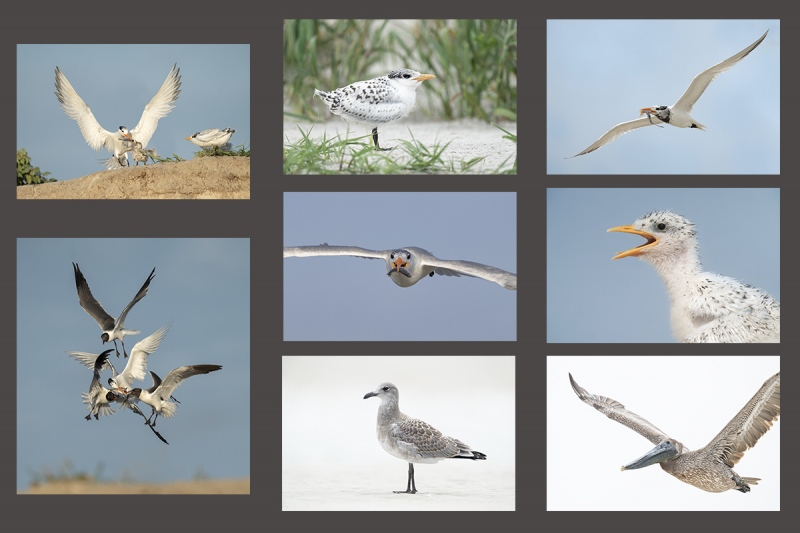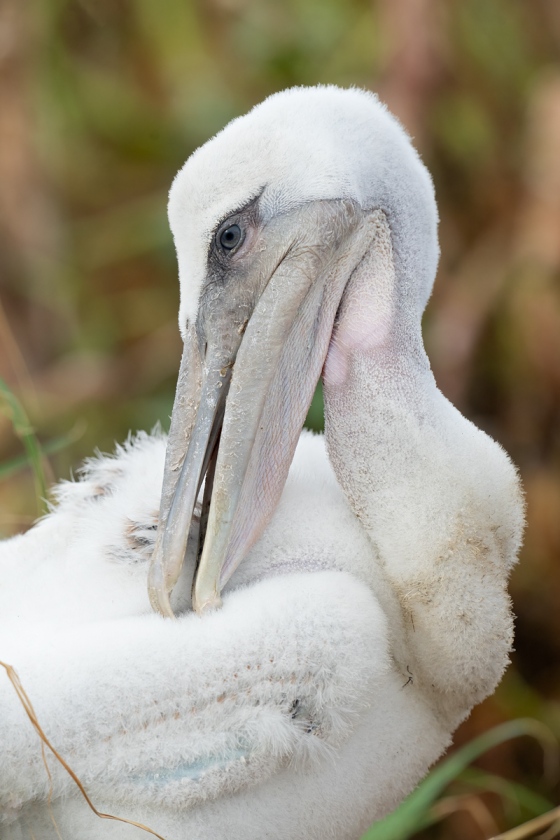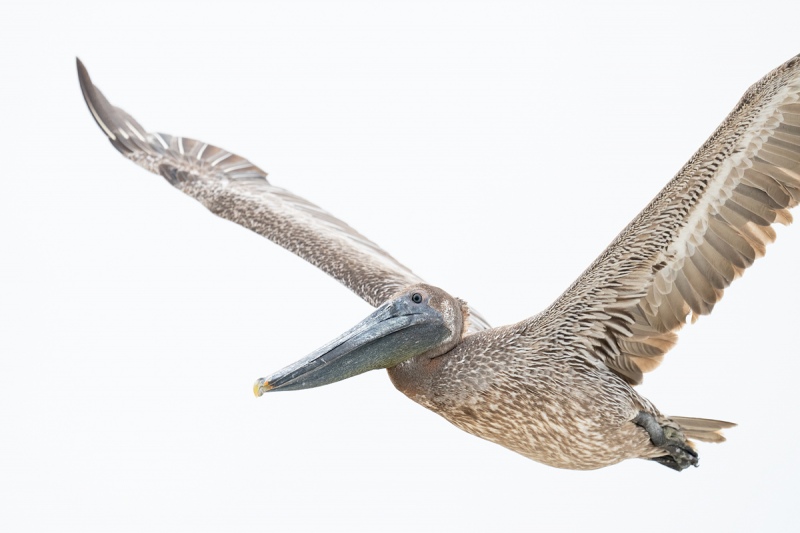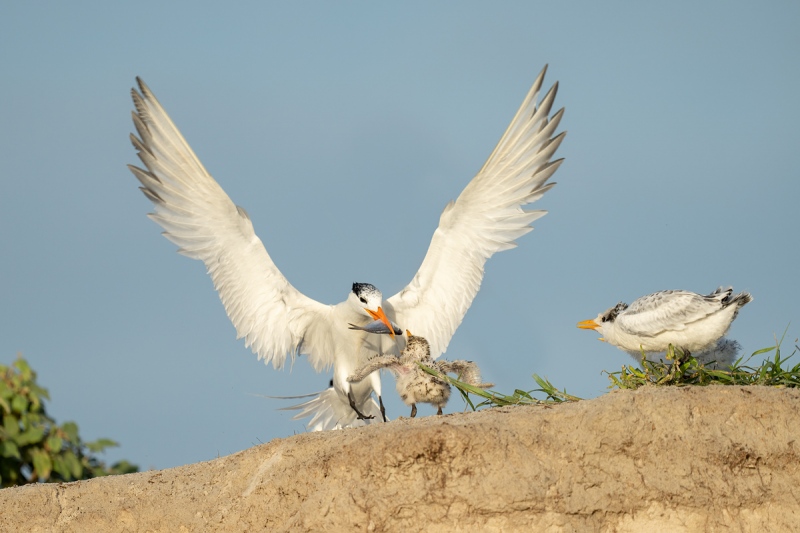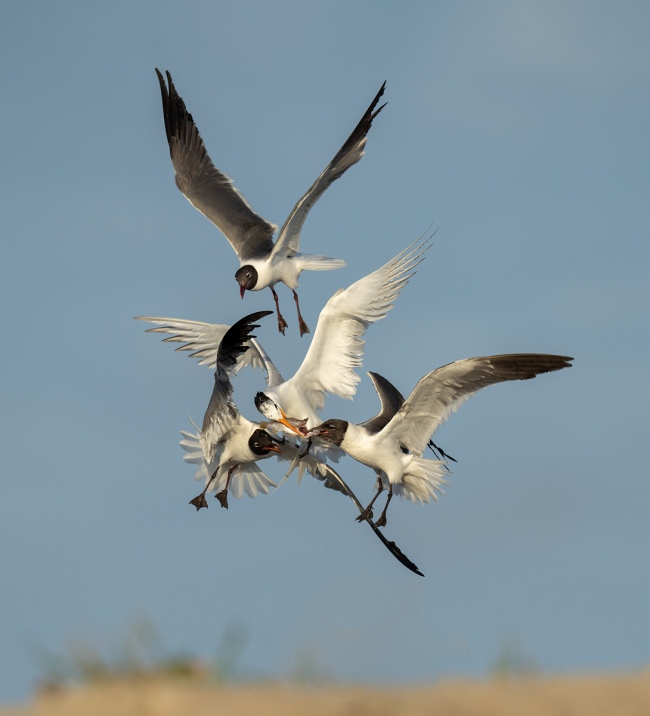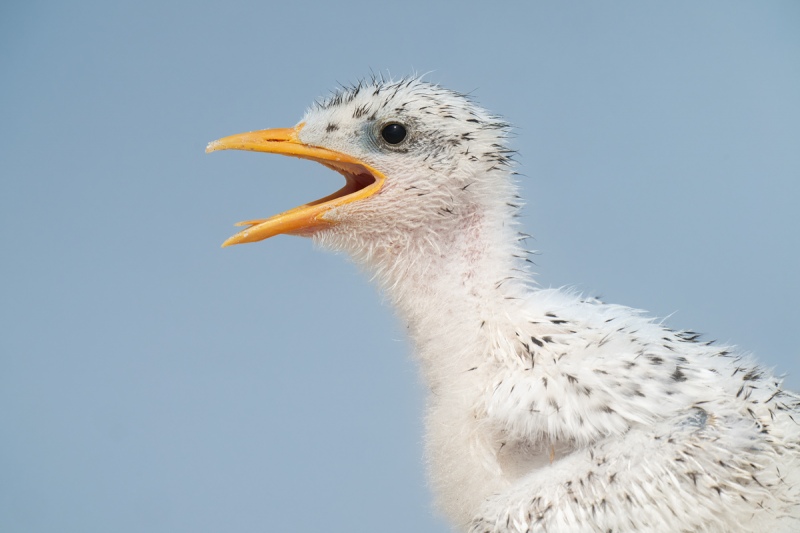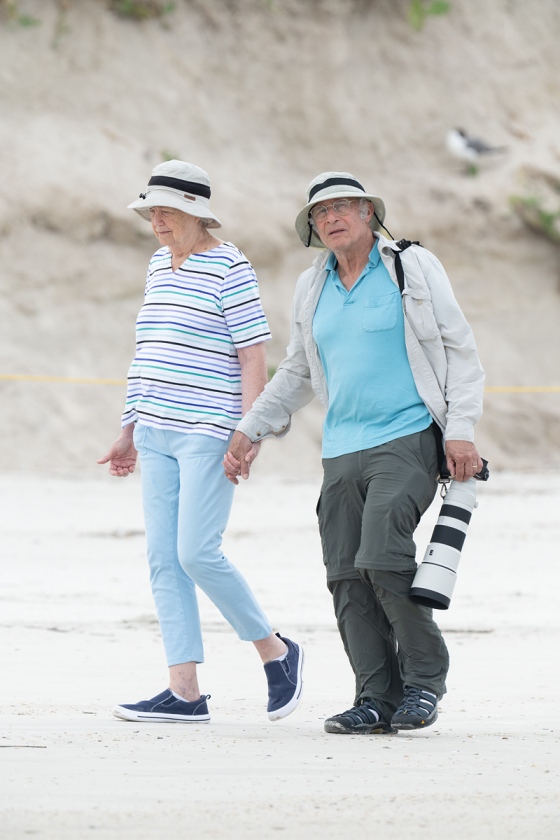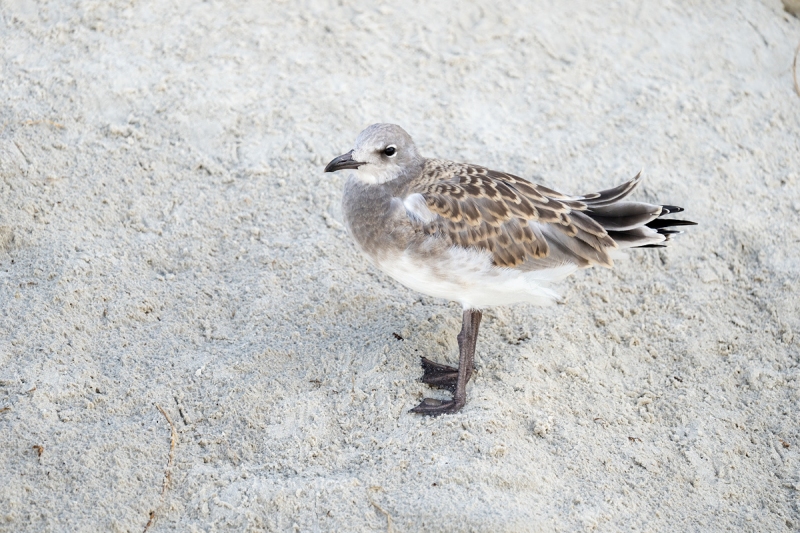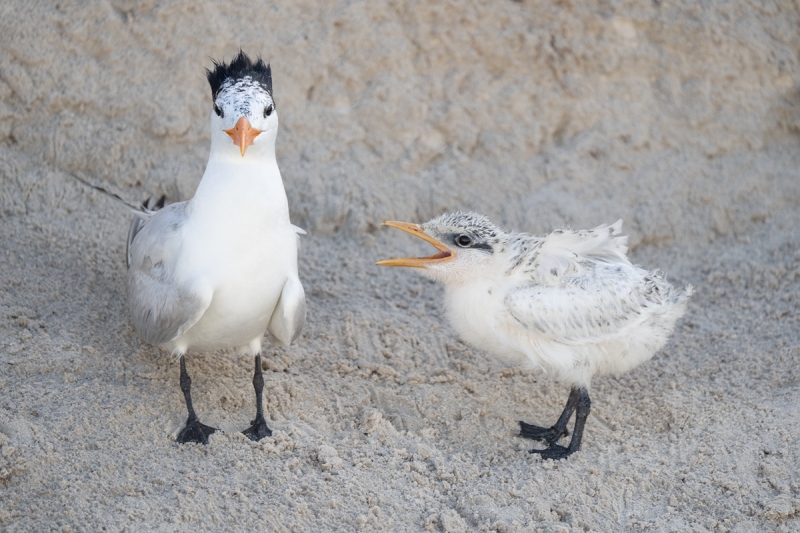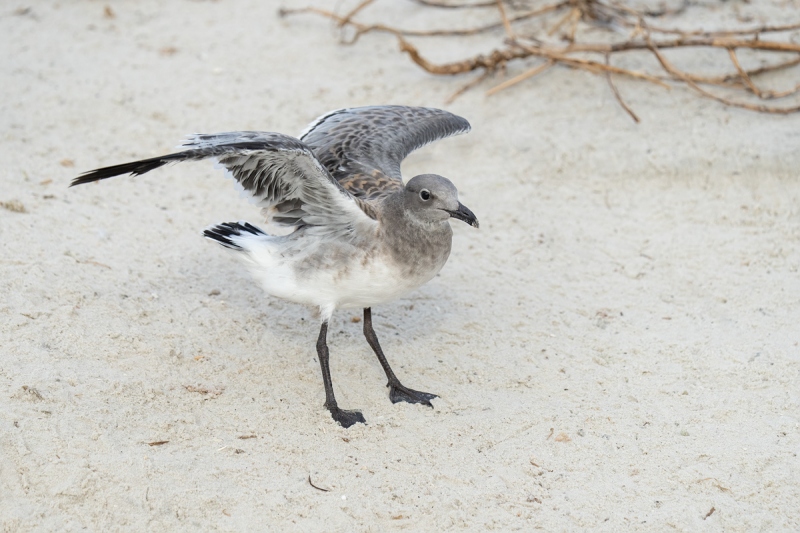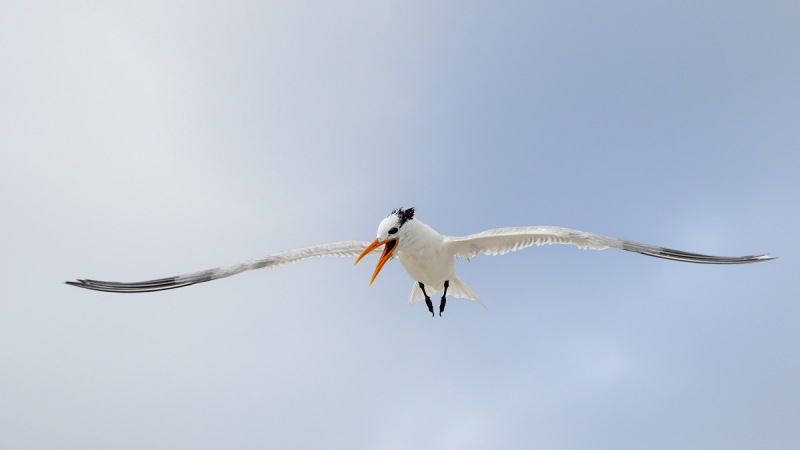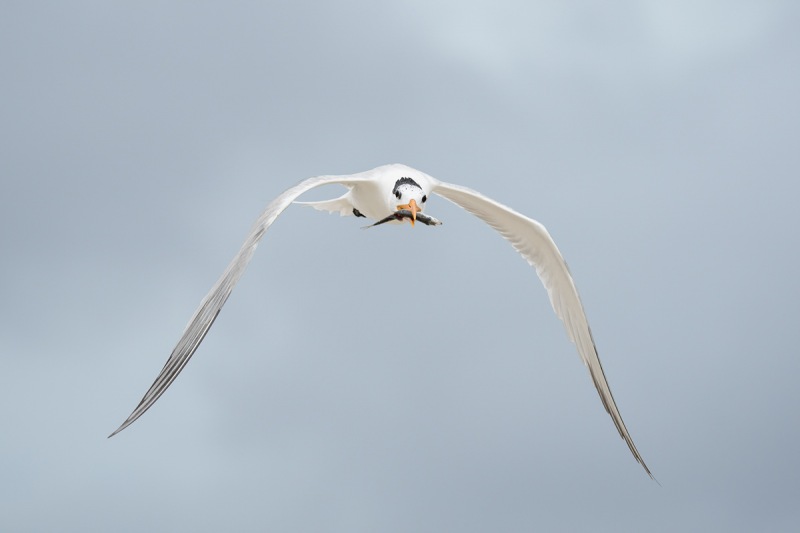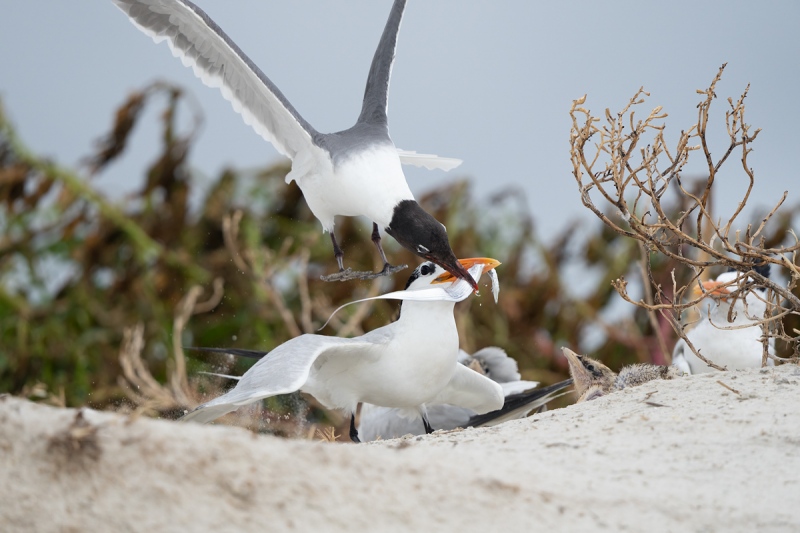July 5th, 2021 Your Preference?
Which of today’s two featured images is the strongest? Please leave a comment and let us know why you made your choice.
What’s Up?
Well, I never thought that I’d ever say these words, but after watching the Milwaukee Bucks defeat the Atlanta Hawks in the NBA playoffs in the morning, and before watching Australian Cam Davis get his first PGA victory in the Rocket Mortgage Classic in the evening, I spent several hours watching the Johnsonville Cornhole Championships 2021 ACL Final Chase — Pro Invitational Tournament. On ESPN no less! The team of Cheyenne Renner and former college football star Ryan Smith won the event. Never heard of Cornhole? You can check out the Best Shots video here.
I worked on lots of images, did my swim early, did my bursts after my nap, and did my walk late. Today is Monday 5 July 2021. It is clear and still right now. I will be heading out early in hopes of photographing a neat lily that I saw on my walk. Wherever you are, and whatever you are doing, I hope that you too have a great day.
This blog post took about two hours to prepare (including the time I spent on the image optimizations) and makes 190 consecutive days with a new one. Please remember that if an item — a Delkin flash card, or a tripod head — for example, that is available from B&H and/or Bedfords and is also available in the BAA Online Store, it would be great, and greatly appreciated if you would opt to purchase from us. We will match any price. Please remember also to use my B&H affiliate links or to save 3% at Bedfords by using the BIRDSASART discount code at checkout. Doing either often earns you free guides and/or discounts. And doing so always earns my great appreciation.
Short-Notice JAX IPT #2
Room for a Single, a Couple, or More …
Photography, especially of birds in flight, was so phenomenal at the Jacksonville Royal Tern/Sandwich Tern/Laughing Gull/Brown Pelican rookery that I will be returning in a week. The only time I have experienced such non-stop flight action was on the gannet boat in Scotland. Two folks have committed to attending the 4-DAY IPT starting with the afternoon session on WED 14 July and ending with the morning session on SUN 18 July. It will be worth flying down for this one. Couples are welcome!
Please e-mail immediately or call my cell if you would like to join me or learn the details; arranging for a great AirBnB will be one of the keys to success so the sooner the better. Or call my cell at 863-221-2372.
Please Remember
With income from IPTs now close to zero, please, if you enjoy and learn from the blog, remember to use one of my two affiliate programs when purchasing new gear. Doing so just might make it possible for me to avoid having to try to get a job as a Walmart greeter and will not cost you a single penny more. And if you use Bedfords and remember to enter the BIRDSASART code at checkout, you will save 3% on every order and enjoy free second-day air shipping. In these crazy times — I am out at least forty to sixty thousand dollars so far due to COVID 19 (with lots more to come) — remembering to use my B&H link or to shop at Bedfords will help me out a ton and be greatly appreciated. Overseas folks who cannot order from the US because of import fees, duties, and taxes, are invited to help out by clicking here to leave a blog thank you gift if they see fit.
New and Better Bedfords Discount Policy!
You can now save 3% on all of your Bedfords photo gear purchases by entering the BIRDSASART coupon code at checkout. Your discount will be applied to your pre-tax total. In addition, by using the code you will get 2nd day air shipping via Fed Ex.
Grab a Nikon AF-S Teleconverter TC-14E III and save $14.99. Purchase a Canon EOS R5 and your discount will be $116.97. Purchase a Sony FE 600mm f/4 GM OSS lens and save a remarkable $389.94! Your Bedford’s purchase no longer needs to be greater than $1,000.00 for you to receive a discount. The more you spend, the more you save.
Money Saving Reminder
Many have learned that if you need a hot photo item that is out of stock at B&H and would enjoy free second-day air shipping, your best bet is to click here, place an order with Bedfords, and enter the coupon code BIRDSASART at checkout. If an item is out of stock, contact Steve Elkins via e-mail or on his cell phone at (479) 381-2592 (Central time). Be sure to mention the BIRDSASART coupon code and use it for your online order to save 3% and enjoy free 2nd-day air shipping. Steve has been great at getting folks the hot items that are out of stock at B&H and everywhere else. The wait lists at the big stores can be a year or longer for the hard to get items. Steve will surely get you your gear long before that. For the past year, he has been helping BAA Blog folks get their hands on items like the SONY a9 ii, the SONY 200-600 G OSS lens, the Canon EOS R5, the Canon RF 100-500mm lens, and the Nikon 500mm PF. Steve is personable, helpful, and eager to please.


Gear Questions and Advice
Too many folks attending BAA IPTs (remember those?) and dozens of photographers whom I see in the field and on BPN, are–out of ignorance–using the wrong gear especially when it comes to tripods and more especially, tripod heads… Please know that I am always glad to answer your gear questions via e-mail
Nesting Brown Pelicans!
There are a few dozen pelican nests at the JAX colony, some at or just above eye level behind a low dune. To avoid the clutter, I went with my longest focal length: 1200mm. I am making more sharp images with the SONY 600 GM/2X TC/Alpha 1 rig than ever when working at 1200mm. On BPN, Arash Hazeghi has been posting amazing flight images made with this combo. Check out his amazing Western Sandpiper in flight in here in the Avian Gallery.
|
|
|
This image was created on 30 June 2021 on a beach near Jacksonville, FL. I used the Induro GIT 304L/
Levered-Clamp FlexShooter Pro-mountedSony FE 600mm f/4 GM OSS lens and The One, the Sony Alpha 1 Mirrorless digital camera. ISO 1600. Exposure determined via Zebras with ISO on the rear dial: 1/3200 sec. at f/4 (wide open) in Manual mode. RawDigger showed this exposure to be dead-solid perfect. AWB at 6:02pm on a cloudy afternoon. Wide/AF-C was active at the moment of exposure and performed perfectly. Be sure to click on the image to see a larger version.
Image #2: Brown Pelican, ten-month-old juvenile in flight
|
More Looking for Very Special
There are lots of pelicans flying above the dunes, taking advantage of the updrafts. It is easy to create hundreds of decent images if you put your mind to it. I created many hundreds on my four-day visit without really trying. I kept only this one, and perhaps a handful of others, ones that checked all the boxes and were a bit different. It is rare for me to handhold the 600 f/4, but I can do it easily for short periods of flight photography or during cloudy-session-walks while sitting on the beach or sandbar and using the Knee-Pod technique. I am quite fond of the 3/4-bird image designs with large-in-the-frame birds in flight, in part because of the incredible underwing detail you can attain on white-sky days.
Typos
With all blog posts, feel free to e-mail or to leave a comment regarding any typos or errors.
July 4th, 2021 A Tough Choice …
Which of today’s three featuered images is the strongest? Please leave a comment and let us know why you made your choice.
What’s Up?
As often occurs when I am home, a ton of work got done yesterday. Most of the morning was spent preparing the Michael De Rosa blog post. I did get my swim in between the passing thunderstorms, and took a late-afternoon walk while dodging raindrops. After my walk, I headed down to the lake without my gear. I was glad to see both 2-colt crane families doing well. On my walks and drive-arounds, I keep my eyes open looking for blooming wildflowers, but despite the numerous downpours, there are simply not very many flowers around. In addition, the rain-soaked North and South Fields as well as the South Peninsula are too soggy to drive on safely. Doubt me? See the Hilariously Stuck in the Mud blog post here for proof.
So even though today, Sunday 4 July 2021, dawned clear and still (and humid for a change), I opted to stay in this morning. Wherever you are, and whatever you are doing, I hope that you too have a great day.
Bedfords currently has zero names on their a1 wait-list, and is expecting five more Sony Alpha 1 bodies soon. Click here to order yours and be sure to use the BIRDSASART discount code at checkout to save 3%, enjoy free 2nd-day air Fed-Ex, and earn free entry into the SONY Alpha a1 Info and Updates group (a $150 value!).
This blog post took about two hours to prepare (including the time I spent on the image optimizations) and makes 189 consecutive days with a new one. Please remember that if an item — a Delkin flash card, or a tripod head — for example, that is available from B&H and/or Bedfords and is also available in the BAA Online Store, it would be great, and greatly appreciated if you would opt to purchase from us. We will match any price. Please remember also to use my B&H affiliate links or to save 3% at Bedfords by using the BIRDSASART discount code at checkout. Doing either often earns you free guides and/or discounts. And doing so always earns my great appreciation.
JAX IPT #2
Limit Four/One Opening or a Couple
Photography, especially of birds in flight, was so phenomenal at the Jacksonville Royal Tern/Sandwich Tern/Laughing Gull/Brown Pelican rookery that I will be returning in ten days. The only time I have experienced such non-stop flight action was on the gannet boat in Scotland. Two folks have committed to attending the 4-DAY IPT starting with the afternoon session on WED 14 July and ending with the morning session on SUN 18 July. It will be worth flying for this one. Couples are welcome! As I committed to running this one with just one photographer, it is a go!
Please e-mail immediately or call my cell if you would like to join me or learn the details; arranging for a great AirBnB will be one of the keys to success so the sooner the better. Or call my cell at 863-221-2372.
Price Drop!
Sony a9 ii Mirrorless Digital Camera Body
Price reduced $103.00 12 JUNE 2021
Price reduced $200.00 3 JULY 2021
BAA Record-low Price
Multiple IPT veteran Larry Master is offering a Sony a9 ii mirrorless digital camera body in near-mint condition (with a very low shutter count of 2340) for $2695.00 (was $2998.00). There is a single, almost microscopic scratch on the rear monitor. The sale includes the original box and everything that came in it, along with insured ground shipping via major courier to lower-48 US addresses only. Your new camera will not ship until your check clears unless other arrangements are made.
Please contact Larry via e-mail or by phone at 1-518-645-1545 (Eastern time zone).
As things turned out, the a9 and then the a9 ii turned out to be life-changers for me. From the moment I tracked that first incoming Brandt’s Cormorant, I knew that SONY a9 series bodies featured the world’ best AF. I upgraded to the a9 ii as soon as it was released for the slightly larger body size. At one point I owned two a9 ii bodies. A new a9 ii sells for $4,498.00 so you can save a very nice $1803.00 by grabbing Larry’s a9 ii ASAP. Not to mention that the new Sony A1 sells for $6498.00 … artie
|
|
|
This image was created on 30 June 2021 on a beach near Jacksonville, FL. I used the Induro GIT 304L/
Levered-Clamp FlexShooter Pro-mountedSony FE 600mm f/4 GM OSS lens and The One, the Sony Alpha 1 Mirrorless digital camera. ISO 640. Exposure determined via Zebras with ISO on the rear dial: 1/3200 sec. at f/4.5 (stopped down 1/3 stop) in Manual mode. AWB at 7:11am on a sunny morning with a bit of haze in the eastern sky.
Wide/AF-C was active at the moment of exposure and performed perfectly. Be sure to click on the image to see a larger version.
Image #1: Royal Tern feeding chick
|
Chick-Feeding Tip
Creating good images of terns feeding their chicks is a huge challenge. Most of the time, either the adult or the chick is facing away from the camera. My best advice is to get on an incoming bird with a fish and hold the shutter button down … By taking advantage of today’s high-frame-rate camera bodies, you just might come up with a winner.
“My mama always said, ‘Life was like a box of chocolates. You never know what you’re gonna get.’” Forrest Gump as played by Tom Hanks.
Well, feeding sequences are a lot like boxes of chocolates; you never know what you are gonna get. For me, the spectacular landing pose of the adult with the fish pretty much makes up for the fact that the little tan and dark brown speckled chick is angled away from us.
|
|
|
This image was created on 30 June 2021 on a beach near Jacksonville, FL. I used Induro GIT 304L/
Levered-Clamp FlexShooter Pro-mountedSony FE 600mm f/4 GM OSS lens and The One, the Sony Alpha 1 Mirrorless digital camera. ISO 640. Exposure determined via Zebras with ISO on the rear dial: 1/3200 sec. at f/5 (stopped down 2/3 stop) in Manual mode. AWB at 7:16am on a sunny morning with a bit of haze in the eastern sky.
Wide/AF-C was active at the moment of exposure and performed perfectly. Be sure to click on the image to see a larger version.
Image #2: Laughing Gulls mobbing Royal Tern to steal fish meant for chick
|
The #1 Flight/Fight Tip
Photographing midair avian battles is extremely difficult. There is never any indication that a fight is about to start, and the action is usually over in a few seconds at most. Getting a good look at all of the faces of the combatants is nearly impossible. And the more birds involved in the squabble, the less chance you have of getting decent — much less excellent, head angles. On sunny days, most of the fights you see are likely to be well off sun angle.
My very best advice is that you do not hesitate: get on the action as soon as is humanly possible, trust your camera’s AF system by assuming and anticipating that it will acquire focus, and then hold the shutter button down. If you follow that advice, and you get lucky, you just might come up with a few decent frames. I got really lucky here as six images from a 12-frame sequence were decent. The frame after this one was slightly stronger but the face and bill of the gull at the top of the frame is blocked by the tern’s right wing. Not surprisingly, all twelve frames were made in less than a single second. As I said, you must not hesitate.
As noted in the the SONY Alpha a1 Set-up and Info group e-mails, when you are in Wide with Bird Eye and Face Tracking enabled, the Alpha 1’s AF system will revert to a zone-like AF and use multiple AF points to achieve success when it is impossible to detect an eye or a face. In any case, all of the images in the sequence were sharp where they needed to be sharp. Though I was stopped down 2/3-stop, it was primarily the distance to the subject that rendered all of the birds relatively sharp.
When the Light is Bright …
I’ve been saying and doing it for decades: when the light is bright, think tight and get right on sun angle. Many folks think that a clear blue sky at 10:00am is death on bird photography. It often is, unless you give my advice a try. You just might be amazed at how often it works.
Like the Least Tern chicks, the Royal Tern chicks come in a variety of flavors! There are brown ones, all-white ones, buff-colored ones, and tan ones. And each of those come either plain or with sprinkles (aka speckled). This is one of my favorites: pure white with black speckles. You can see a trace of the egg tooth near the tip of the upper mandible. I like the bit of blue on the lores and the pink skin on the chin and the neck.
SONY and Me
Switching to SONY, first with the a9 and the a9 II, and then with the remarkable a1, has enabled me (and others, like Mike De Rosa as seen in yesterday’s blog post here), to create images of birds in flight and in action that I could not even have dreamed of when using Canon and then Nikon.
From Joe Barranco via e-Mail
Thanks for your great ideas on the A1 set up. I have been getting MANY more keepers doing things your way!
From Barbara White via e-Mail
Wow, I just gotta say – I learn so much from the SONY Alpha a1 Set-up and Info group! My camera is on my desk, and I’m always picking it up and changing something that I’ve read about in the e-mails.
Thanks, Barbara
From Janet Horton via e-Mail
Hi Artie, Mystery solved. Yes, I was able to replicate what you did. I forgot that you have to set self-timer using the upper dial. I am used to that being a MENU selection.
Thanks much, Janet
SONY Alpha a1 Set-up and Info Group
The SONY Alpha a1 Set-up and Info Group is going great guns as more and more folks chime in with thoughtful questions and experience-based answers. As the a1 is becoming more readily available, more and more folks are getting their hands on this amazing body. With two folks joining yesterday, we are now up to an astounding 64 lucky and blessed photographers! Early on, we discussed the myriad AF options. I gave my opinion as to the best one for flight and general bird photography. More recently, we have been in contact with folks at SONY sharing our thoughts, experiences, and frustrations with the EVF blackout problem.
All who purchased their Alpha a1 bodies via a BAA affiliate link will receive a free subscription to the Sony Alpha a1 Set-Up and Info Updates after shooting me their receipts via e-mail. (Note: it may take me several days to confirm B&H orders.) This same service may be purchased by anyone with an a1 body via a $150.00 PayPal sent to birdsasart@verizon.net indicating payment for Alpha a1 Info Updates. Alternatively, folks can call Jim weekdays at 1-863-692-0906 to pay via credit card. New members will receive composite e-mails that summarize all previous discussions.
Typos
With all blog posts, feel free to e-mail or to leave a comment regarding any typos or errors.
July 3rd, 2021 What’s Up?
On Friday (I thought it was Saturday …) I worked long and hard on e-mail #20 for the SONY Alpha a1 Set-up and Info Notes: Firmware Update 1.10 and More Odds and Ends. I sent it in the afternoon. I have more work to do on the group today.
It was great to get back in the pool yesterday and to do my late afternoon walk. Today — 3 July 2021, is another hazy, hot and humid one. I publishing this post at 11:21am eastern time and it is pouring for a change! Wherever you are, and whatever you are doing, I hope that you too have a great day.
Enjoy today’s blog post that details how Mike De Rosa dispelled the myth that it is difficult or impossible to learn to use SONY gear after many decades of using another system, in his case, Canon. Please leave a comment letting us know which of Mike’s images you liked and why you made your choices.
Bedfords currently has zero names on their a1 wait-list, and is expecting five more Sony Alpha 1 bodies soon. Click here to order yours and be sure to use the BIRDSASART discount code at checkout to save 3%, enjoy free 2nd-day air Fed-Ex, and earn free entry into the SONY Alpha a1 Info and Updates group.
This blog post took about five hours to prepare (including the time I spent on the image optimizations) and makes 188 consecutive days with a new one. Please remember that if an item — a Delkin flash card, or a tripod head — for example, that is available from B&H and/or Bedfords and is also available in the BAA Online Store, it would be great, and greatly appreciated if you would opt to purchase from us. We will match any price. Please remember also to use my B&H affiliate links or to save 3% at Bedfords by using the BIRDSASART discount code at checkout. Doing either often earns you free guides and/or discounts. And doing so always earns my great appreciation.
JAX IPT #2
Wanna Be Like Mike?
One signed up, two more interested …
Photography, especially of birds in flight, was so phenomenal at the Jacksonville Royal Tern/Sandwich Tern/Laughing Gull/Brown Pelican rookery that I plan on returning fairly soon if possible. The only time I have experienced such non-stop flight action was on the gannet boat in Scotland. Right now I am looking at a 4-DAY IPT starting with the afternoon session on WED 14 July and ending with the morning session on SUN 18 July.It will be worth flying for this one. Couples welcome! As I committed to running this one with just one photographer, it is a go! Limit: 5 photographers/Openings 4 (or 3 or 2).
Please e-mail immediately or call my cell if you would like to join me or learn the details; arranging for a great AirBnB will be one of the keys to success so the sooner the better. Or call my cell at 863-221-2372.
|
|
|
This image was created on 30 June 2021 on a beach near Jacksonville, Florida. While seated on the damp sand (using the knee-pod technique), I used the hand held Sony FE 600mm f/4 GM OSS lens with the Sony FE 1.4x Teleconverter and The One, the Sony Alpha 1 Mirrorless digital camera. ISO 800. Exposure determined via Zebras with ISO on the rear dial: 1/640 sec. at f/8 (stopped down one stop in error) in Manual mode. AWB at 5:12pm on a cloudy afternoon.
Tracking: Expand Spot was active at the moment of exposure and performed perfectly by grabbing Mike right between the eyes.
Mike De Rosa with his SONY 200-600/Alpha 1 rig, wife Norma, and Laughing Gull
Image by Arthur Morris/BIRDS AS ART
|
Michael De Rosa
Mike De Rosa, 78, was born in Spanish Harlem (on the island of Manhattan in NYC). His Dad was Italian, his Mom Puerto Rican. He graduated City College with a B.S. in Chemistry and followed that up with a Ph. D. in Organic Chemistry earned at Brooklyn College. He was actually teaching Chemistry at Brooklyn while I was finishing up my undergraduate studies in 1969 and 1970. He went on to teach Chemistry for his entire career. He retired as a Professor Emeritus at Penn State Brandywine.
Mike was happily married to Susan for 50 years and lost her to a neurological disorder in 2016. His happy marriage to Norma — who attended the JAX IPT as a non-photographer, is now in its third year. Mike has enjoyed photography for the past 40 years. He attended a Nickerson Beach IPT about five years ago. He is a sweet, kind, and funny man, with a NYC sense of humor.
Via e-Mail from Mike
5/30
Hi Artie, I am interested in some In-the-Field lessons to learn how to use my Sony Alpha 1. Thanks, Mike De Rosa
6/8
Hi Artie, After over forty years as a Canon shooter, I am befuddled by my new Sony a1. I can’t seem to figure it out. Frankly I don’t want spend more money on gear until I’m sure that I am not going to switch to the top of the line Canon body. Using my Sigma 150-600 with a Canon 7D Mark II, I captured an image that was selected in the Top Ten of a 2019 Bird Portrait Competition. We — my wife Norma will tag along, are pretty free beginning this this weekend. Thanks. And best regards, Mike
My Role
I told Mike right off the bat that I could teach him to use his a1 body. I let him know that his results with the Sigma 150-600 would not be on a par as compared to what he could do with the SONY 200-600. I was so positive that I was right, that I purchased a brand new SONY 200-600 from Bedfords for him to use on the JAX IPT. I was confident that he would purchase the lens after he learned to use the a1 and saw what he could accomplish with the 200-600. He went home with the new 2-6 and is looking forward to using it on an upcoming trip to Africa.
I sent him my a1 settings on a UHS II card so that he could mess around with the camera and so that we would be on the same page when he arrived in Florida. He successfully loaded my a1 settings onto his a1, but was still pretty much lost …
Via e-Mail from Mike
7/2
Norma and I had a great time with you and the group during the IPT. Clemens was great too! It was a wonderful experience; the birds and the photographic opportunities were incredible. And I learned a ton. Thanks again! Mike De Rosa
|
|
|
This image was created by Mike De Rosa on the first afternoon of the JAX IPT. He used the hand held Sony FE 200-600mm f/5.6-6.3 G OSS lens (at 600mm) and The One, the Sony Alpha 1 Mirrorless digital camera. ISO 1600. Exposure determined via Zebras with ISO on the rear dial: 1/1000 sec. at f/6.3 (wide open) in Manual mode. AWB on a cloudy afternoon.
Wide/AF-C was active at the moment of exposure and performed perfectly. Click on the image to enjoy a larger version
Image #1: Fledgling Laughing Gull on dune
Image courtesy of and copyright 2021: Mike DeRosa
Post-processing by BIRDS AS ART
|
The First Afternoon
Mike stayed by my side for the first afternoon — wind against sun had us photographing birds on the shaded face of the dune as detailed in the blog post here. First, I taught him how to use Wide AF to photograph static subjects. Then we talked about recomposing for a pleasing image design. Last, I explained how to get the right exposure using the Zebras on the rear wheel system.
He passed the first two lessons with flying colors but struggled with using Zebras to get the right exposure. By the first morning, he had that down pat and — not surprisingly — made very good to perfect exposures for the rest of the trip. This simple portrait of a fledgling LAGU was a big step up.
|
|
|
This image was created by Mike De Rosa, also on the first afternoon of the JAX IPT. He used the hand held Sony FE 200-600mm f/5.6-6.3 G OSS lens (at 600mm) and The One, the Sony Alpha 1 Mirrorless digital camera. ISO 1000. Exposure determined via Zebras with ISO on the rear dial: 1/1250 sec. at f/6.3 (wide open) in Manual mode. AWB on a cloudy afternoon.
Wide/AF-C was active at the moment of exposure and performed perfectly. Click on the image to enjoy a larger version
Image #2: Royal Tern chick begging on dune
Image courtesy of and copyright 2021: Mike DeRosa
Post-processing by BIRDS AS ART
|
Getting Better Fast!
With this image, Mike demonstrated that he had mastered using the AF system to come up with a pleasing composition and had used Zebras to come up with a perfect exposure. He had some problems with properly framing the subject for a day or two until I finally beat it into him!
|
|
|
This image was created by Mike De Rosa, also on the first morning of the JAX IPT. He used the hand held Sony FE 200-600mm f/5.6-6.3 G OSS lens (at 411mm) and The One, the Sony Alpha 1 Mirrorless digital camera. ISO 1600. Exposure determined via Zebras with ISO on the rear dial: 1/1600 sec. at f/6.3 (wide open) in Manual mode. AWB on a cloudy partly cloudy morning.
Wide/AF-C was active at the moment of exposure and performed perfectly. Click on the image to enjoy a larger version
Image #3: Laughing Gull — flapping juvenile
Image courtesy of and copyright 2021: Mike DeRosa
Post-processing by BIRDS AS ART
|
Action, Traction, and Satisfaction
Mike’s improvement from the first afternoon to the second morning was dramatic. Here we see that he graduated successfully by photographing a bird in action with a good exposure and decent framing. This one was cropped a bit from the left and below. Now it was on to the big challenge: photographing birds in flight!
|
|
|
This image was created by Mike De Rosa on the second morning of the JAX IPT. He used the hand held Sony FE 200-600mm f/5.6-6.3 G OSS lens (at 250mm) and The One, the Sony Alpha 1 Mirrorless digital camera. ISO 1600. Exposure determined via Zebras with ISO on the rear dial: 1/2500 sec. at f/6.3 (wide open) in Manual mode. AWB on a partly sunny morning.
Wide/AF-C was active at the moment of exposure and performed perfectly. Click on the image to enjoy a larger version
Image #4: Royal Tern screaming in flight
Image courtesy of and copyright 2021: Mike DeRosa
Post-processing by BIRDS AS ART
|
The Flight Payoff
Here Mike used Wide AF for flight. He also learned when to set the limit range switch to Not Full for flight, and when to switch it back to Full when working subjects at close range. He showed the versatility of the 200-600 by zooming out to 250mm. His framing was perfect for this full frame image. As was the exposure.
|
|
|
This image was created by Mike De Rosa, also on the second morning of the JAX IPT. He used the hand held Sony FE 200-600mm f/5.6-6.3 G OSS lens (at 300mm) and The One, the Sony Alpha 1 Mirrorless digital camera. ISO 1000. Exposure determined via Zebras with ISO on the rear dial: 1/3200 sec. at f/6.3 (wide open) in Manual mode. AWB on a mostly sunny morning.
Wide/AF-C was active at the moment of exposure and performed perfectly. Click on the image to enjoy a larger version
Image #5: Royal Tern in flight with fish for chick
Image courtesy of and copyright 2021: Mike DeRosa
Post-processing by BIRDS AS ART
|
Another Goal Achieved!
Mike wanted to create a quality image of a Royal Tern in flight carrying a fish and he did just that.
Viveza
Images #4 & 5 were both exposed perfectly in less-than-full-sun conditions. Each original had a pretty much white sky. I have come up with a new technique that enables me to darken and BLUE-up the sky with Viveza without affecting the subject. I will share that in a video ASAP. But I am very busy 🙂
|
|
|
This image was created by Mike De Rosa, again on the second morning of the JAX IPT. He used the hand held Sony FE 200-600mm f/5.6-6.3 G OSS lens (at 565mm) and The One, the Sony Alpha 1 Mirrorless digital camera. ISO 800. Exposure determined via Zebras with ISO on the rear dial: 1/3200 sec. at f/6.3 (wide open) in Manual mode. AWB on a mostly sunny morning.
Wide/AF-C was active at the moment of exposure and performed perfectly.
Image #6: Laughing Gull stealing cutlassfish from Royal Tern
Image courtesy of and copyright 2021: Mike DeRosa
Post-processing by BIRDS AS ART
|
Exceeding Expectations!
With this image, Mike De Rosa exceeded his and my expectations by creating a sharp, nicely framed, unique and dramatic action shot. This was the best by a small margin of a long sequence. Well done, my friend.
I was only able to choose from images made at the beginning of the IPT as when Mike left for home, he still had about 13,000 images to go through. I almost forgot, Mike wanted to learn to use Photo Mechanic to pick his keepers. He’s got that done pat also.
From Joe Barranco via e-Mail
Thanks for your great ideas on the A1 set up. I have been getting MANY more keepers doing things your way!
From Barbara White via e-Mail
Wow, I just gotta say – I learn so much from the SONY Alpha a1 Set-up and Info group! My camera is on my desk, and I’m always picking it up and changing something that I’ve read about in the e-mails.
Thanks, Barbara
From Janet Horton via e-Mail
Hi Artie, Mystery solved. Yes, I was able to replicate what you did. I forgot that you have to set self-timer using the upper dial. I am used to that being just a selection in Menu.
Thanks much, Janet
SONY Alpha a1 Set-up and Info Group
The SONY Alpha a1 Set-up and Info Group is going great guns as more and more folks chime in with thoughtful questions and experience-based answers. As the a1 is becoming more readily available, more and more folks are getting their hands on this amazing body. With two folks joining yesterday, we are now up to an astounding 64 lucky and blessed photographers! Early on, we discussed the myriad AF options. I gave my opinion as to the best one for flight and general bird photography. More recently, we have been in contact with folks at SONY sharing our thoughts, experiences, and frustrations with the EVF blackout problem.
All who purchased their Alpha a1 bodies via a BAA affiliate link will receive a free subscription to the Sony Alpha a1 Set-Up and Info Updates after shooting me their receipts via e-mail. (Note: it may take me several days to confirm B&H orders.) This same service may be purchased by anyone with an a1 body via a $150.00 PayPal sent to birdsasart@verizon.net indicating payment for Alpha a1 Info Updates. Alternatively, folks can call Jim weekdays at 1-863-692-0906 to pay via credit card. New members will receive composite e-mails that summarize all previous discussions.
Typos
With all blog posts, feel free to e-mail or to leave a comment regarding any typos or errors.
|
|



